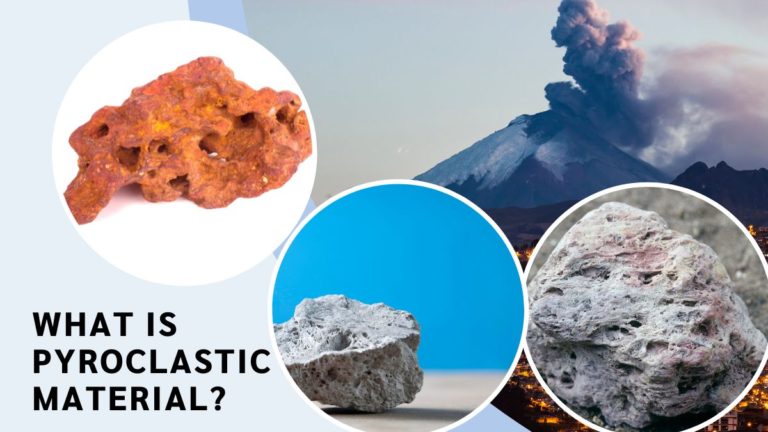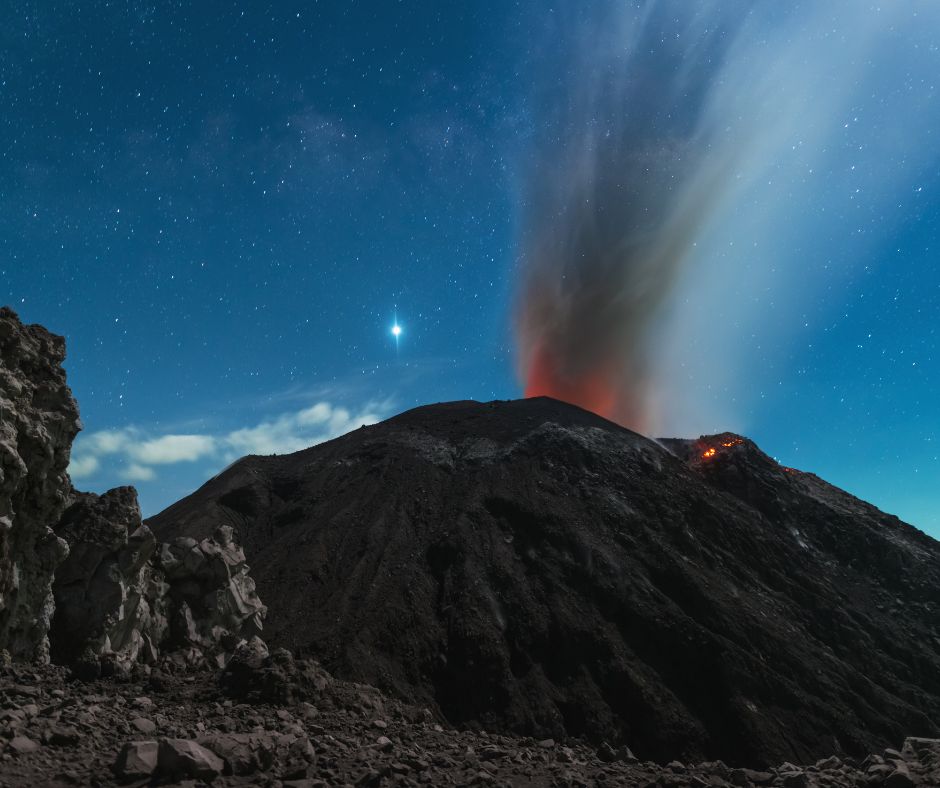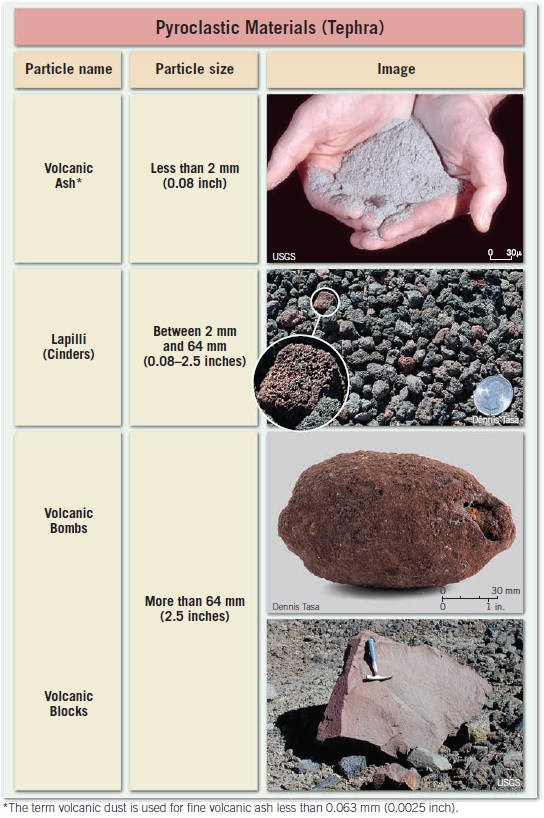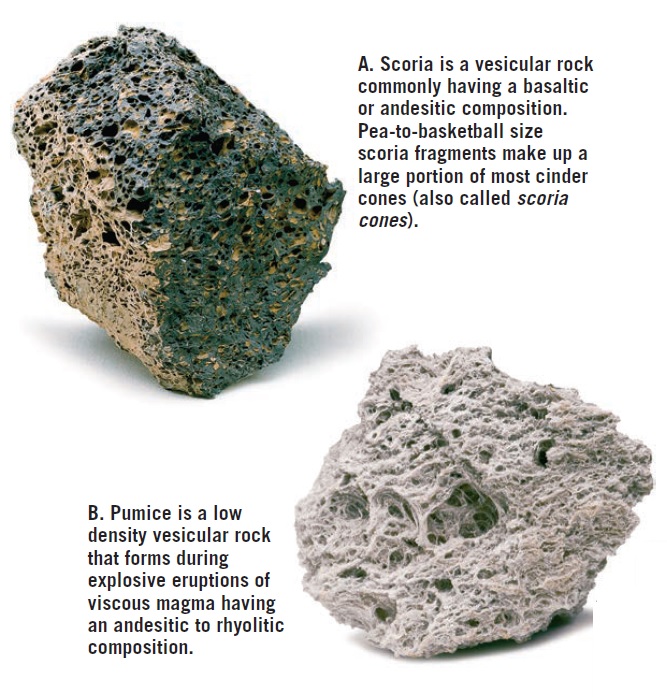What is pyroclastic material?

What is pyroclastic material? When volcanoes erupt energetically, they eject pulverized rock, lava, and glass fragments from the vent.

The particles produced are called pyroclastic materials (pyro = fire, clast = fragment) and are also referred to as tephra. These fragments range in size from very fine dust and sandsized volcanic ash (less than 2 millimeters) to pieces that weigh several tons.

Pyroclastic materials are also commonly referred to as tephra.
Ash and dust particles are produced when gas-rich viscous magma erupts explosively. As magma moves up in the vent, the gases rapidly expand, generating a melt that resembles the froth that flows from a bottle of champagne. As the hot gases expand explosively, the froth is blown into very fine glassy fragments. When the hot ash falls, the glassy shards often fuse to form a rock called welded tuff. Sheets of this material, as well as ash deposits that later consolidate, cover vast portions of the western United States.
Somewhat larger pyroclasts that range in size from small beads to walnuts are known as lapilli (“little stones”). These ejecta are commonly called cinders (2–64 millimeters [0.08–2.5 inches]). Particles larger than 64 millimeters (2.5 inches) in diameter are called blocks when they are made of hardened lava and bombs when they are ejected as incandescent lava. Because bombs are semi-molten upon ejection, they often take on a streamlined shape as they hurtle through the air. Because of their size, bombs and blocks usually fall near the vent; however, they are occasionally propelled great distances. For instance, bombs 6 meters (20 feet) long and weighing about 200 tons were blown 600 meters (2000 feet) from the vent during an eruption of the Japanese volcano Asama.
So far we have distinguished various pyroclastic materials based largely on the sizes of the fragments. Some materials are also identified by their texture and composition. In particular, scoria is the name applied to vesicular ejecta produced from basaltic magma (Figure A).

Scoria and pumice are volcanic rocks that exhibit a vesicular texture.
Vesicles are small holes left by escaping gas bubbles.
These black to reddish-brown fragments are generally found in the size range of lapilli and resemble cinders and clinkers produced by furnaces used to smelt iron. When magmas with intermediate (andesitic) or felsic (rhyolitic) compositions erupt explosively, they emit ash and the vesicular rock pumice (Figure B). Pumice is usually lighter in color and less dense than scoria, and many pumice fragments have so many vesicles that they are light enough to float.
